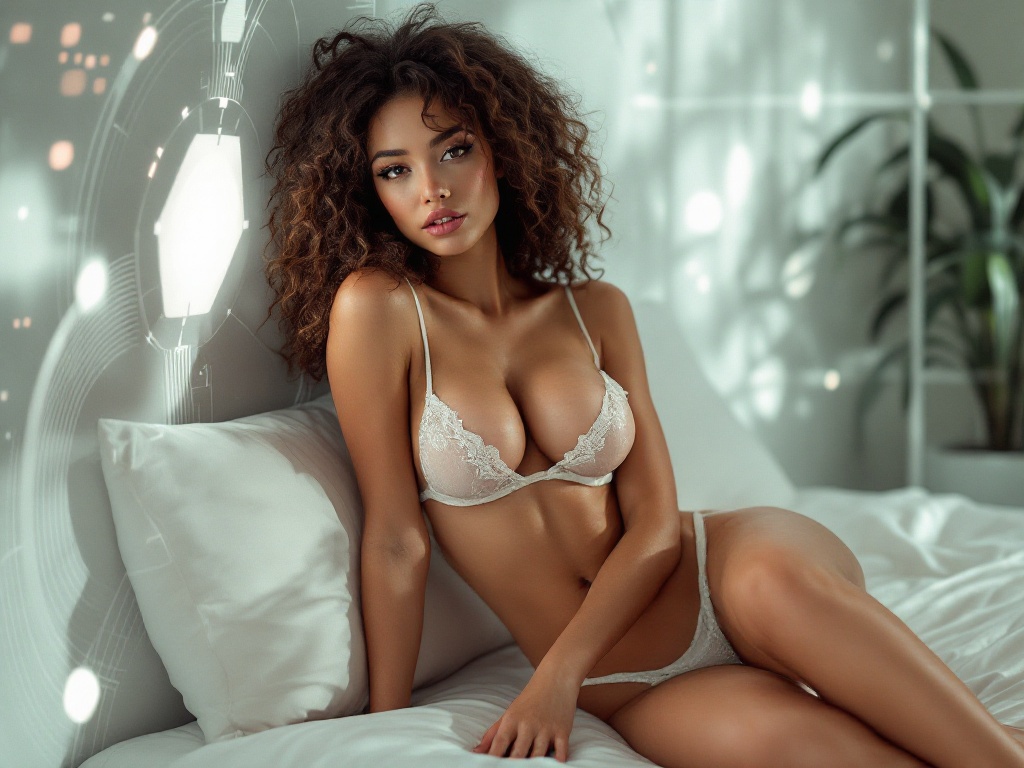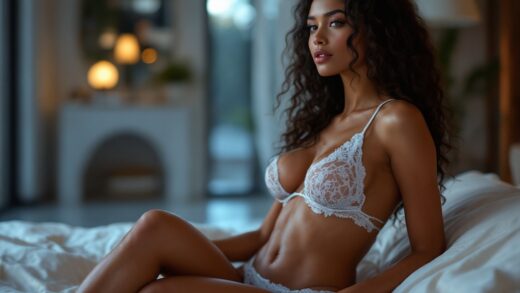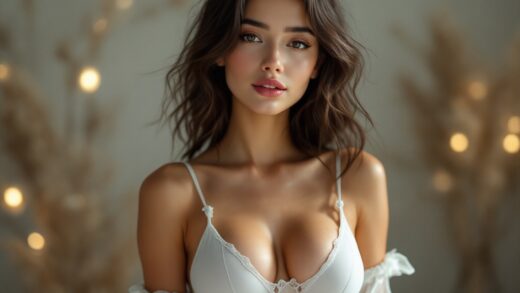In a world characterized by swift technological innovations and shifting cultural landscapes, the confluence of erotic art and artificial intelligence unveils an exciting domain of possibilities. This distinctive blend contests the limits of imagination, visual appeal, and sensory engagement. While erotic art has served as a fundamental aspect of human expression for ages, its intersection with machine learning propels this ancient medium into uncharted realms. With the arrival of AI tools, artists can now wield unprecedented powers to traverse the dimensions of sensuality. The concept of machines deciphering the essence of desire, intimacy, and eroticism is inherently provocative. As we delve deeper into this enthralling topic, we aim to unveil the implications and prospects of combining human invention with AI-driven creativity.
Historically, erotic art has mirrored societal values, attitudes, and cultural frameworks. From the candid illustrations of ancient Rome to the concealed gems of the medieval era, erotic art has perpetually fascinated viewers. Each technological innovation has spurred artists to challenge limits and investigate new mediums. As we embark on this digital epoch, the emergence of AI has significantly influenced the art landscape, fundamentally transforming not only the modes of artistic creation but also reimagining the very definition of art itself. Throughout this exploration, we will highlight how artists and technologists collaborate to forge works that spark contemplation while simultaneously celebrating the sensual facets of human experience.
The Transformation of Erotic Art
The evolution of erotic art is as diverse and rich as the art form itself. From ancient cave paintings hinting at fertility and sensual themes to the intricate digital creations we encounter in modern times, this genre has consistently ignited conversation and debate. Understanding the pivotal movements that have shaped erotic art provides essential context for contemporary artistic expressions. Each period showcases not just the dominant aesthetic of its time, but also reflects the cultural subtleties that shape expressions of sexuality.

Pivotal Movements in Erotic Art
Across history, numerous movements have played a crucial role in the evolution of erotic art. The Renaissance celebrated humanism and the exquisite beauty of the human figure, often illustrating chiaroscuro elements that accentuated sensuality. Surrealism unleashed the extraordinary, crafting dream-like visuals that could evoke both awe and desire. In today’s digital sphere, artists harness unparalleled opportunities for experimentation, resulting in vibrant and provocative artworks.
- Renaissance: Celebrating humanism and the allure of the human figure.
- Surrealism: Diving into dreams and subconscious cravings.
- Digital Era: Unrestricted imagination and the ascent of novel media.
The Influence of AI on Artistic Endeavors
Artificial Intelligence is transforming the landscape of art creation in astonishing ways. Through machine learning, artists are empowered to produce works that can challenge, complement, or even supplant traditional artistic methods. This convergence invites a refreshing viewpoint on what erotic art can embody. As AI assimilates knowledge from the vast array of existing artworks, it evolves continuously, pushing the frontiers of creativity. This collaborative synergy between artists and AI unlocks new interpretations of sensuality, waiting to be discovered.
Technological Foundations of AI Art
At the core of AI-generated art lie algorithms capable of learning and mirroring human-like creativity. Two notable techniques include neural networks and generative adversarial networks (GANs). Neural networks evaluate patterns from existing works to forge new visuals, emulating human cognitive processes. GANs, conversely, involve a rivalry between two neural networks: one creating images and the other providing critiques—resulting in a polished piece of artwork. This groundbreaking approach fosters immersive experiences that encapsulate the essence of eroticism while showcasing creativity informed by data.
| Technology | Functionality | Impact on Art |
|---|---|---|
| Neural Networks | Learning to emulate and replicate human creativity | Producing innovative artworks influenced by existing styles |
| Generative Adversarial Networks (GANs) | Competition between generator and discriminator networks | Enhancing artwork through critique and iterative processes |
Case Studies: The Role of AI in Erotic Art
Within this dynamic narrative, numerous artists and platforms have harnessed AI to craft exquisite erotic works. Some standout examples include:

- Artbreeder: A platform enabling users to merge different artworks, giving rise to fresh interpretations of erotic themes.
- DeepArt: Employing deep learning techniques to transform photographs into artistic portrayals, including erotic visuals.
- AI-Dreams: An innovative venture showcasing AI’s interpretation of erotic art through visual storytelling.
These initiatives not only highlight the artistic prowess of AI but also emphasize its potential to enrich conversations about sexuality in art. Each case study provides a glimpse into how technology collaborates with human emotion and creativity, prompting inquiries about authenticity and the essence of sensual expression. Artists integrating AI are consistently redefining the parameters of eroticism, inviting audiences to engage with art in fresh and provocative manners.
Ethical Dimensions of AI and Erotic Art
As we traverse this uncharted territory, ethical considerations become paramount. The incorporation of AI into erotic art prompts several significant inquiries. For instance, who possesses the rights to artwork generated by AI? How can we guarantee consent in representations that evoke intimacy? The commercialization of emotion poses risks to the genuine human connection embedded in art. The discussions surrounding these topics have gained importance within artistic communities and the wider society.
Community and Collaboration
Emerging artists and technologists are building partnerships to explore the landscape of AI-generated erotic art creatively. Workshops, online communities, and exhibitions serve as venues for exchanging ideas, techniques, and experiences. This collective fosters risk-taking and experimentation, creating a nurturing environment for innovative expressions of sensuality to thrive. As minds unite and boundaries dissolve, the collaborative efforts shape the future of erotic art.
Conclusion
As we investigate the intersection of erotic art and AI, it becomes clear that this fusion reveals unexplored creativity and expression potential. While AI introduces thrilling opportunities, it also urges us to contemplate the profound ethical ramifications surrounding such advancements. The conversation about AI and erotic art is both invigorating and complex, propelling both artists and audiences toward new insights on intimacy and desire. Embracing the innovative capabilities of technology, while remaining aware of its consequences, empowers us to engage with erotic art in vivid and transformative ways.
Frequently Asked Questions
- What defines erotic art?
Erotic art encompasses works that portray sexual themes or sensuality, often intended to challenge perceptions and evoke emotional responses. - How is AI revolutionizing the art scene?
AI brings forth novel methodologies and tools for artistic creation, facilitating unique expressions and questioning traditional notions of creativity. - What are the ethical issues related to AI and erotic art?
Principal concerns revolve around questions of consent, ownership rights, and the risk of misrepresenting human experiences in AI-generated works. - Is AI capable of producing original erotic art?
Certainly! AI can generate original pieces derived from learned patterns in existing artworks, though the interpretation and emotional resonance remain grounded in human experience. - Is AI-generated erotic art accepted in mainstream culture?
Acceptance varies widely; while some view it as an innovative frontier, others express concerns regarding its implications and artistic quality.


